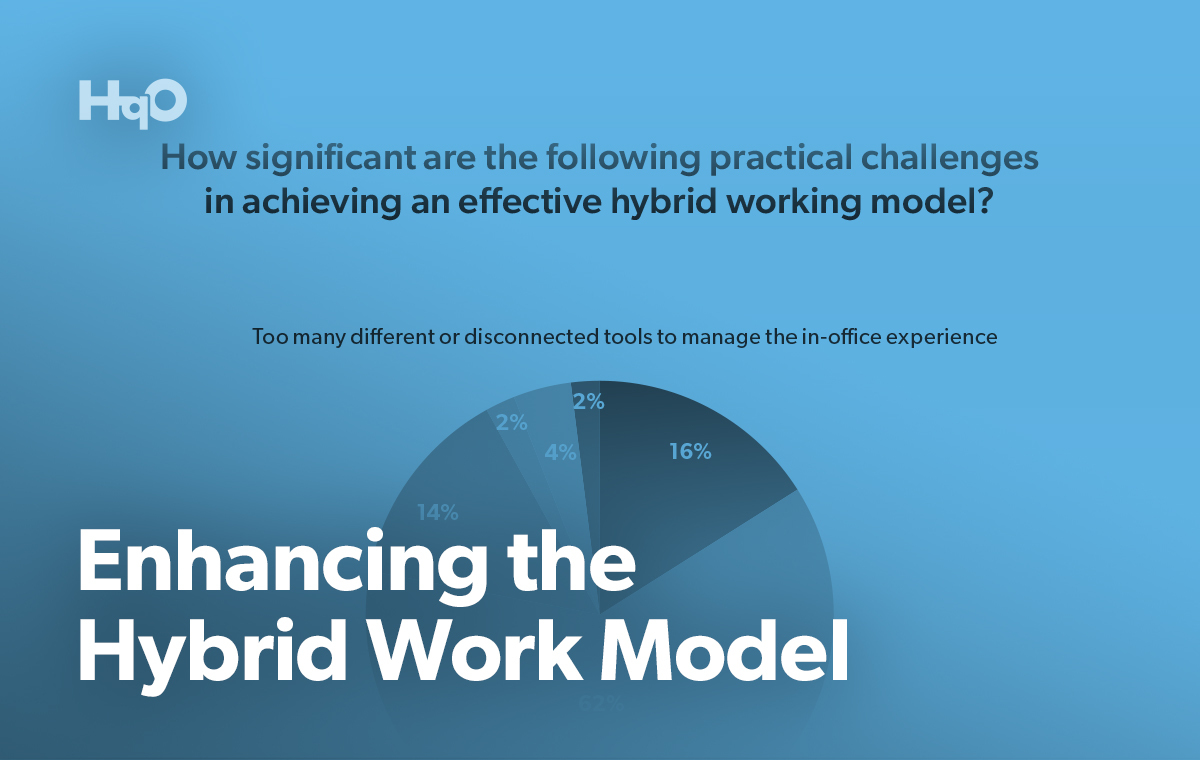Despite it being the most favored approach to work in 2022, hybrid work models have a few unavoidable challenges. Most importantly, they can be difficult to achieve in an effective, sustainable manner — especially to those organizations who were not set up to transition into hybrid working prior to the COVID-19 pandemic.
Looking at the Data
Not only do 52% of employers claim that dispersed working poses a very significant or significant challenge in establishing efficient communication channels across their teams, but an additional 78% see too many disconnected tools as a very significant or significant challenge to achieving an effective hybrid working model. The same respondents (66%) cite that the general lack of awareness of available tools and services is also a very significant or significant hindrance with hybrid work environments.
Many employers, however, already understand what they need to do to maximize their office spaces and investments, as well as achieve an effective hybrid working environment.
56% of respondents say that it is a significant need for them to shift employee behaviors to take advantage of the office, 50% say it is significant for them to address inefficient communication between employees, and 48% say it is significant to encourage employees to use different workspace configurations, such as conference rooms and collaboration spaces.
These findings contextualize why many employers, including several HqO clients, have begun to hire dedicated Workplace Experience Managers. Firms with roles who can spend time specifically addressing new-age challenges (like those mentioned above) will see a higher return on investment (ROI) in their physical office spaces, as well as a higher ROI on their digital tools, services, and other offerings.
This is because keeping employees engaged with their physical workspaces, despite the need for hybrid work models, yields higher results: 52% of employers either strongly agree or agree with the sentiment that companies are more likely to succeed when employees spend more time in the office.
The Right Digital Investments
The most important thing an employer can do in 2022 and beyond is invest in tools that are built to connect and enhance hybrid workplace experiences.
72% of employers agree or strongly agree that workplace experience and engagement tools will be a critical element of successful offices in the future. These tools are the main value-drivers behind hybrid working environments, which an additional 72% of employers agree or strongly agree are equally as important to employees as other workplace benefits such as annual leave and healthcare.
The most commonly implemented workplace experience tools support a variety of functions in the workplace. 76% of employers have already invested in room and desk reservation tools, 74% have already invested in a dedicated employee experience mobile app, and 74% have already invested in employee feedback and support tools.
Many employers are already seeing the benefits of these technology capabilities. 44% plan to invest further into room and desk reservation tools, and 34% plan to invest further into location services, such as wayfinding and occupancy details.
The engagement opportunities created from workplace experience tools are endless — whether the function in question is mobile access, resource booking, food ordering, space monitoring, or more. Not only can experience tools power the flexible workplaces that employees desire, they can also gather important feedback and behavioral data that enables employers to continue to iterate on their workplace investments.
These connections and insights will lead to higher levels of talent attraction and retention, as well as establish an intrinsic value in the office that will encourage employees to return and take advantage of their firm’s competitive resources.
Want to learn more? Download the full report here.



